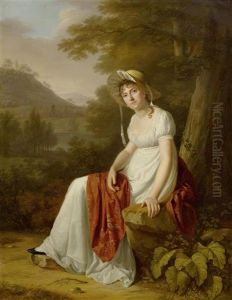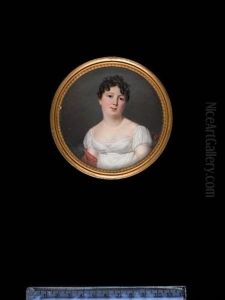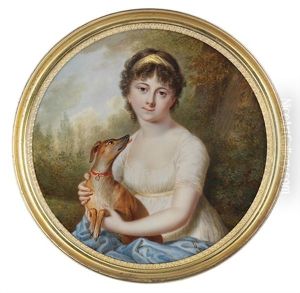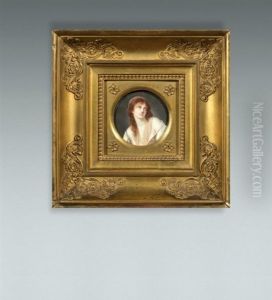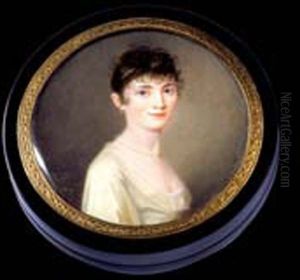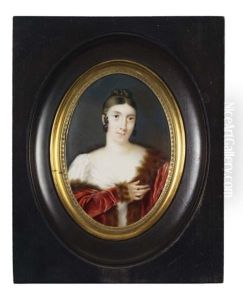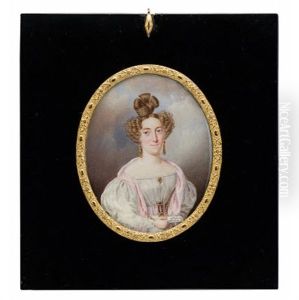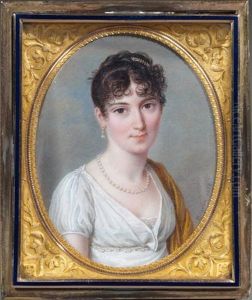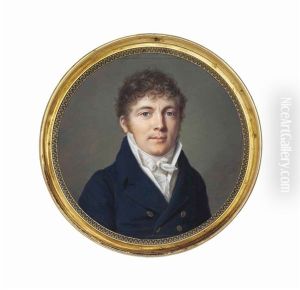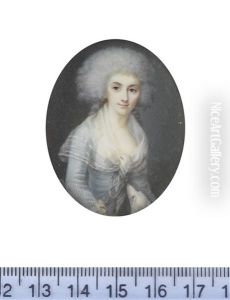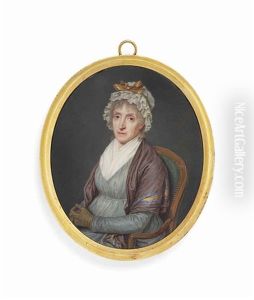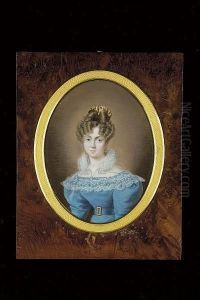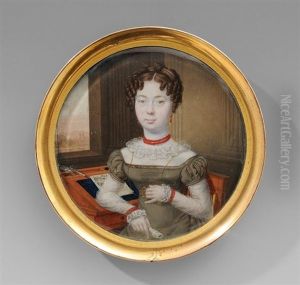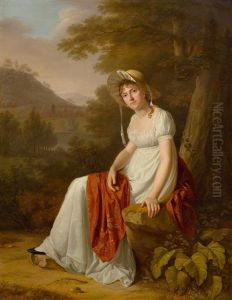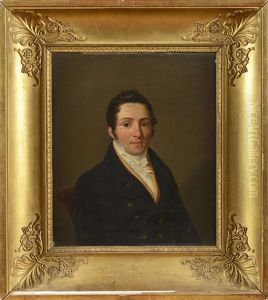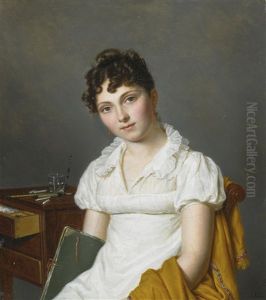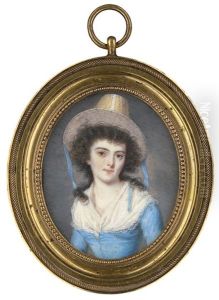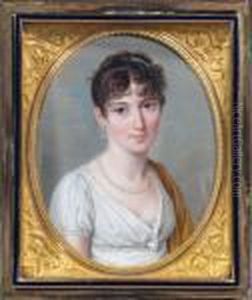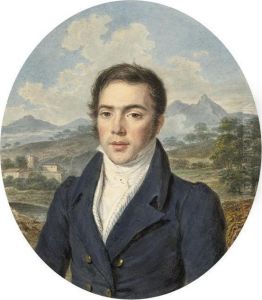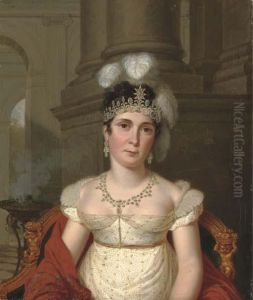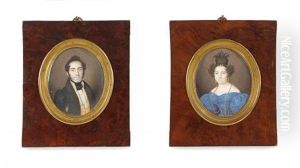Pierre Louis Bouvier Paintings
Pierre Louis Bouvier was a prominent Swiss painter and engraver born in 1765 in Geneva, Switzerland. He is best known for his miniature portraits and landscape paintings, which capture the delicate balance between realism and the romantic sensibilities of his time. Bouvier's life and work were deeply influenced by the artistic and cultural milieu of Geneva, as well as the broader European art movements of the late 18th and early 19th centuries.
Bouvier's artistic journey began under the tutelage of local artists in Geneva, where he honed his skills in drawing and painting. His talent for capturing the intricacies of the human face and the subtle interplay of light and shadow quickly gained him recognition. He excelled particularly in the art of miniature painting, a popular genre of the time, which required meticulous attention to detail and a mastery of color and composition. Bouvier's miniatures were sought after by the elite of Geneva and beyond, serving as cherished mementos and symbols of prestige.
Throughout his career, Bouvier remained deeply connected to his Swiss roots, often depicting the picturesque landscapes of Switzerland with a romantic flair that revealed his deep appreciation for nature. However, his work also reflects the influence of his travels across Europe, where he studied the works of the Old Masters and contemporary artists alike. This exposure broadened his artistic repertoire and introduced elements of Neoclassicism and Romanticism into his work.
Despite his success, Bouvier's life was not without challenges. The political and social upheavals of the late 18th and early 19th centuries impacted the art world, affecting patronage and the demand for art. Nonetheless, Bouvier adapted to these changes, continually evolving his style and exploring new subjects and techniques.
Pierre Louis Bouvier's legacy is marked by his contribution to the development of Swiss art and the miniature portrait genre. His works are preserved in various museums and private collections, serving as a testament to his skill and artistic vision. Bouvier passed away in 1836 in Geneva, leaving behind a body of work that continues to be celebrated for its beauty, precision, and emotional depth.
